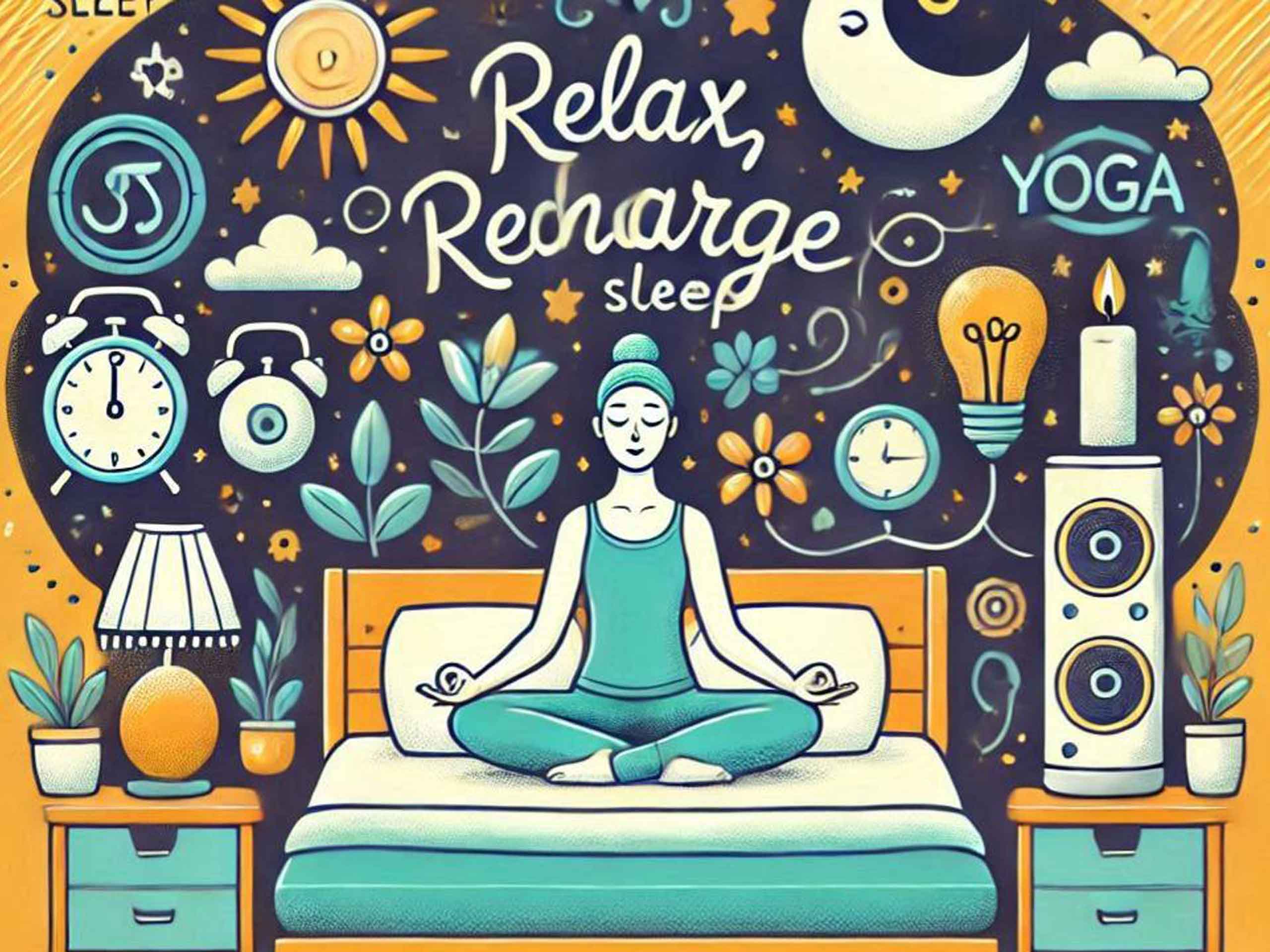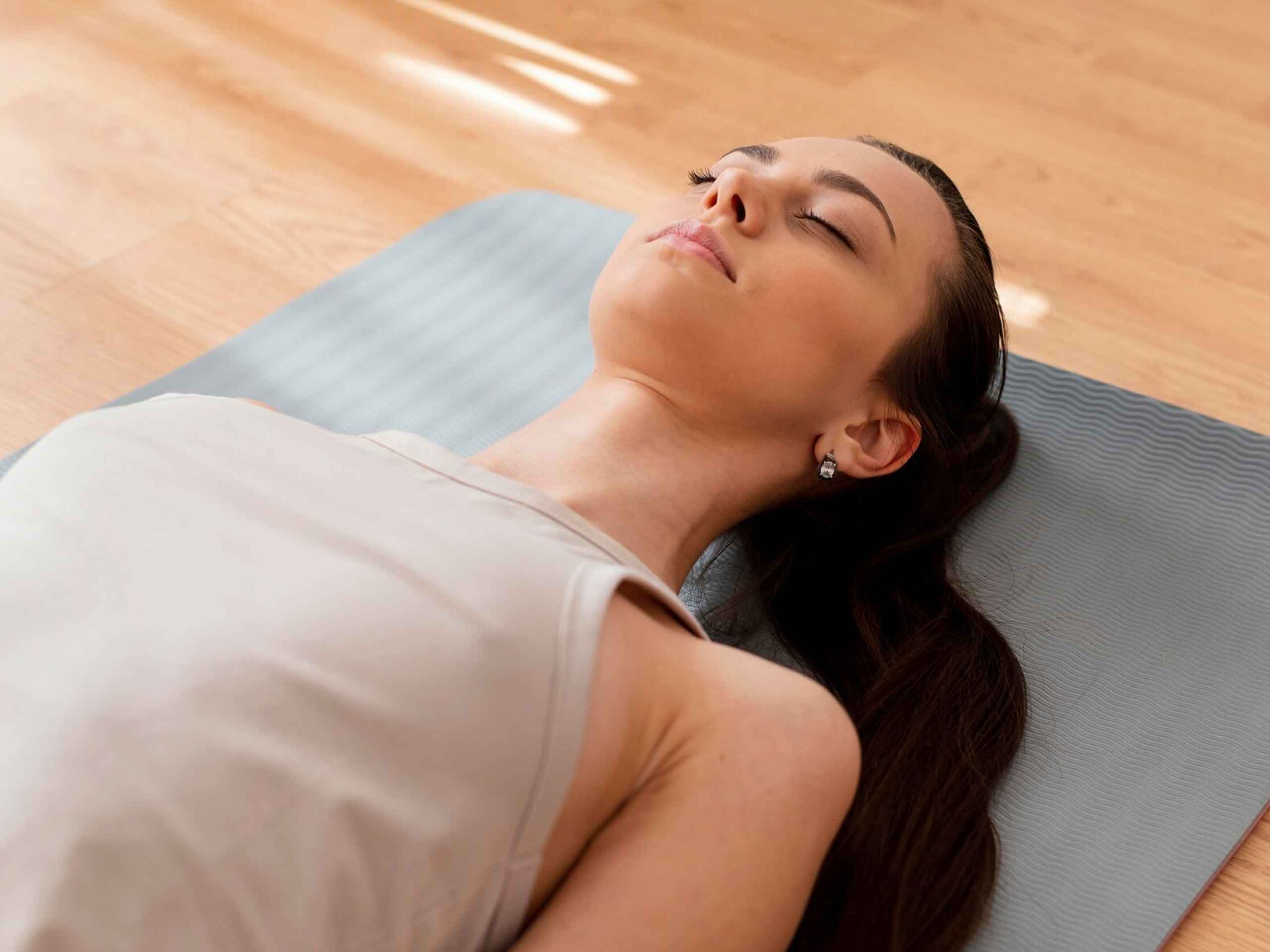Relax, Recharge, Sleep: Yoga's Path to a Restful Night

In today's fast-paced world, getting a good night's sleep can often seem like an unattainable goal. However, integrating yoga into your bedtime routine can be a natural and effective way to prepare your body and mind for rest. Here, we explore some gentle yoga poses that can help you unwind, de-stress, and enhance the quality of your sleep.
Why Yoga Helps with Sleep
Yoga combines physical postures, breathing exercises, and meditation, which together can reduce stress, lower heart rate, and promote relaxation. These elements are crucial for overcoming insomnia or just improving overall sleep quality. Here’s how some specific poses can benefit your sleep:

1. Child's Pose (Balasana)
How to Do It:
- Kneel on your mat with your big toes together and knees apart.
- Sit back on your heels, then fold forward, extending your arms in front of you or alongside your body.
- Rest your forehead on the ground, and breathe deeply into your back.
Benefits:
This pose gently stretches the hips, thighs, and ankles, promoting mental calmness. It's particularly effective for relieving stress and fatigue.
2. Legs Up the Wall Pose (Viparita Karani)
How to Do It:
- Sit close to a wall, then lie back and extend your legs up the wall.
- Your body forms an L-shape. You can place your arms comfortably at your sides or in your lap.
Benefits:
This pose is excellent for circulation, helping to drain lactic acid from the legs after a long day. It also has a soothing effect on the nervous system, promoting relaxation.
3. Reclining Bound Angle Pose (Supta Baddha Konasana)
How to Do It:
- Lie back on your mat, bring the soles of your feet together, and let your knees fall out to the sides.
- Support your knees with pillows if needed for comfort. Place your arms in a comfortable position.
Benefits:
This pose opens up the hips and chest, encouraging a sense of openness and release. It’s great for relieving tension in the groin, inner thighs, and knees, and can be profoundly relaxing before sleep.
4. Corpse Pose (Savasana)
How to Do It:
- Lie flat on your back, legs slightly apart, and arms at your sides, palms up.
- Close your eyes and focus on deep, slow breathing. Let go of any tension in your body.
Benefits:
Often used to conclude a yoga practice, Savasana is all about deep rest. It helps in reducing stress, lowering blood pressure, and preparing the body for sleep by promoting total relaxation.

5. Standing Forward Bend (Uttanasana)
How to Do It:
- Stand with feet hip-width apart, hinge at your hips, and bend forward, letting your head hang.
- You can bend your knees if your hamstrings are tight. Hold onto your elbows or let your hands rest on the ground or your shins.
Benefits:
This pose calms the brain, relieves stress, and stretches the hamstrings, which can be particularly beneficial if you've been seated for long periods during the day.
Tips for a Yoga Bedtime Routine
- Consistency is Key: Practice these poses nightly to see improvements in your sleep quality.
- Create a Soothing Environment: Dim the lights, perhaps use some calming scents, and ensure your room is cool and quiet.
- Mindful Breathing: Integrate deep, rhythmic breathing into each pose to amplify relaxation.
By incorporating these yoga poses into your nightly routine, you're not just preparing your body for sleep; you're also training your mind to transition into a state of peace and calm. Whether you're dealing with chronic insomnia or just looking to enhance your sleep, these poses can be your nightly allies. Sweet dreams, and may your nights be as restorative as your yoga practice.
Join our community today and take the first step towards a healthier, more balanced you.
Note: This is for informational purposes only and should not replace professional medical advice. Always consult a healthcare professional before starting any new treatment or session.
Photo: @Freepik, @unsplash @mircosoft designer

